Industry Terms and Other Things to Know
Industry Terms and Other Things to Know
Are you looking for office furniture, but feeling confused by some of the terms you come across? Don't worry, we’re here to demystify the jargon. This page explains some of the most common terms and parts of office furniture.
To get started, choose a category and find the term you are looking for. Terms are listed in alphabetical order within each category.
Ready to buy? Shop our wide selection of high-quality office furniture and accessories to find the best fit for your needs.
Chairs and Seating

Adjustable Armrests (1): Depending on the office chair, armrests that can be adjusted in height, width, and depth to provide customized support for the arms and shoulders. At Source, many of our ergonomic chairs have this feature.
Castors (2): The wheels attached to the base of the chair, which allow for easy movement and mobility within the workspace. Different castors may be needed depending on whether your chair is moving on carpet or hardwood/laminate.
Headrest (3): Headrests provide support for the head and neck, promoting proper posture and reducing strain. Sometimes headrests are fixed and built into the design of a chair. Other times, headrests are an optional attachment that are available with some of our high-back chair options.
Lumbar Support (4): This refers to the lower back support provided by the chair to maintain the natural curve of the spine. In some cases, the lumbar support is fixed and built into the structure of the seat back. In other cases, lumbar support can be adjusted to perfectly align with your back.
Mesh Back (5): A backrest made of mesh fabric, which provides breathability and flexibility for improved comfort and support. Mesh backs are also breathable and temperature-regulating.
Learn more about mesh office chairs.
Pneumatic Height Adjustment (6): A lever or button mechanism that allows users to adjust the height of the chair easily using a gas-lift mechanism. This makes the chair adjustable to your leg length, preventing your feet from dangling.
Synchro-Tilt Mechanism: This mechanism allows the seat and backrest to tilt simultaneously, maximizing comfort when you lean back. You can find this kind of mechanism in many of our ergonomic chairs.
Seat Depth Adjustment: This feature allows the seat depth to be adjusted to accommodate different leg lengths, ensuring proper support and comfort.
Tilt Tension Control: Ever feel like you’re going to fall out of your chair when you lean back? Or do you feel like you have to push too hard to recline your chair? Tilt Tension Control is a knob or lever that adjusts the amount of resistance when you recline in your chair, allowing you to customize the rate of recline.
Desks and Workstations

Benching: Benching refers to workstations that are grouped together to form a large table that can then be subdivided into individual desks. Workstations in this configuration are meant to accommodate multiple team members, while still providing individual sections that are separated by dividers for privacy.
Bridge (1): A bridge is commonly found in U-shape desks. It acts as the connecting piece between the two side sections of the desk, forming the “U.” The bridge serves as an additional workspace for tasks requiring extra room or as a connector for various components of the desk. It can also provide a convenient space for equipment such as printers or scanners.
Bowfront Desk (2): A bowfront desk is a type of desk characterized by its gently curved or bowed front edge. This design feature gives the desk a more elegant and sophisticated appearance compared to traditional rectangular desks, perfect for executive offices. Bowfront desks are more comfortable to host meetings with colleagues and clients, as they provide legroom on the bowfront edge.
Bullet Desk (3): A bullet desk is a type of desk that features a rounded or bullet-shaped extension attached to one side of the main desk surface. This extension usually protrudes outward and is typically used as an additional workspace or a meeting area.
Desk Return (4): A return is an extension of a desk that forms the L-shape configuration. By transforming a straight desk into an L-shape or corner desk, returns provide more surface area, which is great for organizing the way you work.
Desktop (5): The top of a desk refers to the surface or tabletop where work is typically done. It's the part of the desk that provides a flat, stable area for writing, using a computer, or performing other tasks. Performance desktops are made with high-density laminate and DuraEdge detailing for a sturdy, long-lasting surface.
Grommets (6): Grommets are rings that are installed into precut openings on the surface of a desk. These openings are usually circular or rectangular in shape, allowing wires and chords to pass through easily for neat cable management. In some cases, grommets can also be used to securely install charging ports, monitor arms, or desktop panel systems.
Main Desk (7): When we talk about the main part of a desk, we’re referring to the surface where most of your work materials and equipment will live. With L-shape and U-shape desks, the main part is usually the side where the desk is the largest, giving you the most space to work.
Modesty Panel (8): A modesty panel is a vertical panel or screen that is typically found on the underside of a desk. Sometimes, a modesty panel is built into the design of a desk. At other times, it’s an additional piece that is mounted underneath the desk. The purpose of a modesty panel is to maximize privacy between the user and potential office guests, like clients or coworkers.
Radius (9): : If you see a curved inner corner on an L-shape or U-shape desk, this is called a radius. A radius makes working from the corner of a desk more comfortable, eliminating the awkward corner where the main desk meets the return. A radius also provides more space for your keyboard, mouse, and monitor.
Telescoping Legs: You’ll hear this term in the context of height-adjustable tables and standing desks. Telescoping legs typically consist of two or more tubular sections nested within each other. These legs have sections that can slide or extend in and out, allowing the user to adjust the height of the desk to their desired level. More telescoping sections means the height-adjustable standing desk can cover a wider range of heights.
Storage

Credenza: A credenza is typically placed behind or adjacent to a desk to provide additional drawer or cabinet storage. It can be used on its own, with a hutch, or as part of an L-shape or U-shape desk configuration. It has a flat surface, similar to or shorter than the height of a desk, that can be used to organize important items in your workspace.
Hutch: A hutch extends your desk storage vertically and consists of shelves and cabinets that keep important paperwork and office essentials within reach. They mount to the surface of your desk or onto the wall directly above your workstation. Hutches can also mount to the top of a credenza for a comprehensive storage unit in your office.
What is the benefit of using a wall-mounted hutch opposed to a surface-mounted hutch?
A wall-mounted hutch leaves the surface of your desk clear and undisturbed, which can make for a more spacious workspace. But, not all office buildings allow you to mount fixtures on a wall. In this case, a surface-mounted hutch is a great option.
Pedestal: A pedestal is a small storage unit consisting of drawers and compartments that are commonly placed on the underside of a desk. This convenient location makes it perfect for files and office stationery that need to be frequently accessed. Sometimes, pedestals are mounted directly underneath the desk, but they also come in mobile options that are equipped with castors for mobility.
Box/File: Refers to an attached or free-standing pedestal that features a compact box drawer and a larger file drawer. The box drawer is ideal for storing office supplies and essentials, while the file drawer is generally used for organizing documents with hanging file folders.
Box/Box/File: Refers to an attached or free-standing pedestal that features two compact box drawers and a larger file drawer. The box drawer is ideal for storing office supplies and essentials, while the file drawer is generally used for organizing documents with hanging file folders.
File/File: Refers to an attached or free-standing pedestal that contains two filing drawers, perfect for storing paperwork and documents using hanging file folders.
Boardroom and Meeting Tables

Arena-Shaped: Arena is a boardroom table shape that is rectangular with rounded corners, forming a “squoval” (square-oval). The rounded corners are great for comfortable collaboration, promoting a meeting environment that’s conducive to discussions, brainstorming, and more.
Bistro: Bistro refers to a table that stands taller than a regular desk or worksurface. At this height, users can stand and lean against the table, or use a stool to sit comfortably.
Boat-Shaped: A boat-shaped conference table tapers towards the ends, mimicking the shape of a boat. This shape is great for seating multiple meeting participants, while allowing everyone to have a clear view of each other.
Flip Top: A flip top table features a top that can be flipped horizontally or vertically using a hinge mechanism. When collapsed, these tables nest into each other, making it easy to store when not in use. Flip top tables can be used to create multiple configurations for meetings, workshops, classrooms, and more.
Racetrack: A racetrack conference table refers to an elongated oval shape, similar to the shape of a racetrack. It features rounded ends and straight sides, creating a smooth and continuous surface that makes it comfortable for employees to sit around. This shape makes it easy to add last-minute meeting attendees without anyone having to sit against a sharp corner.






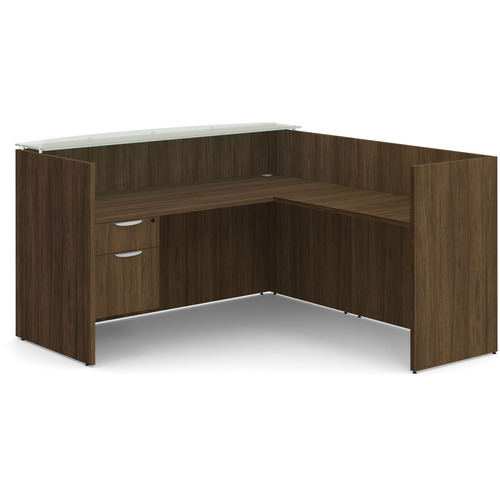















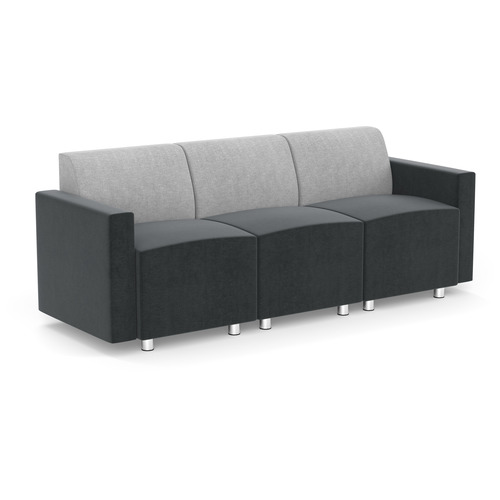
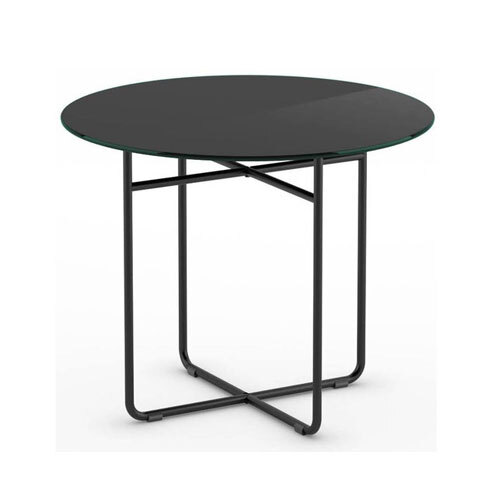







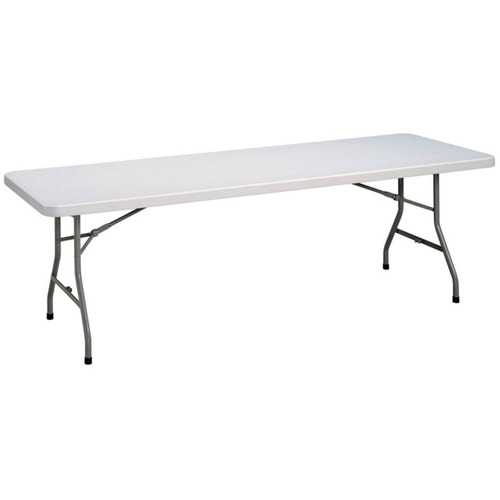





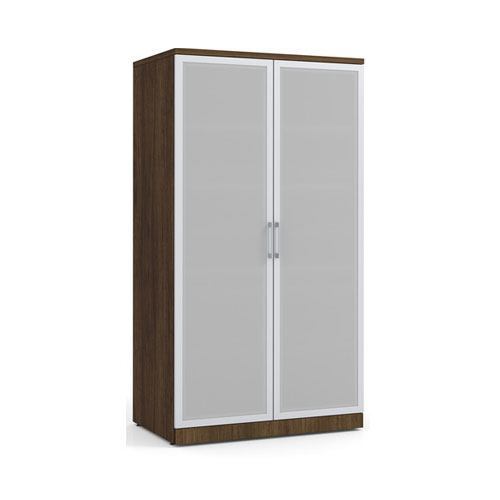

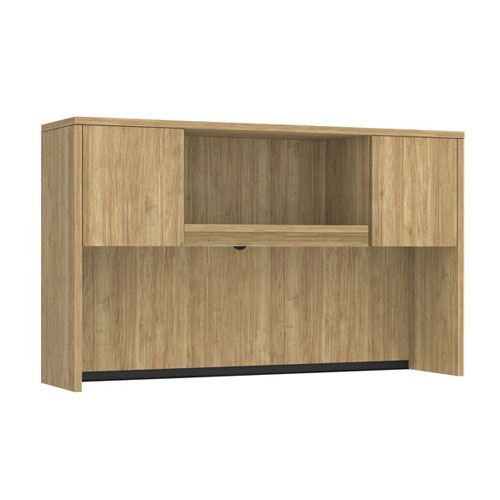

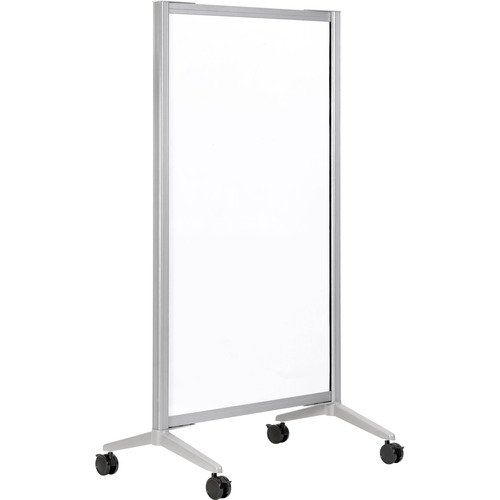




.jpg)